Kristi Jakobsoo
Human resources specialist at the Supreme Court
Ave Hussar
Head of the Supreme Court personnel and communication department
Number of judges and justices
As of the beginning of 2025,[1] there were 256 judge and justice positions in Estonia – together with the so-called temporary judge positions[2] and the specifications established for 2025[3] – and 249 of these were filled. There was one vacancy at Tallinn Administrative Court, four at Harju District Court, one at Tartu District Court and one at Viru District Court.
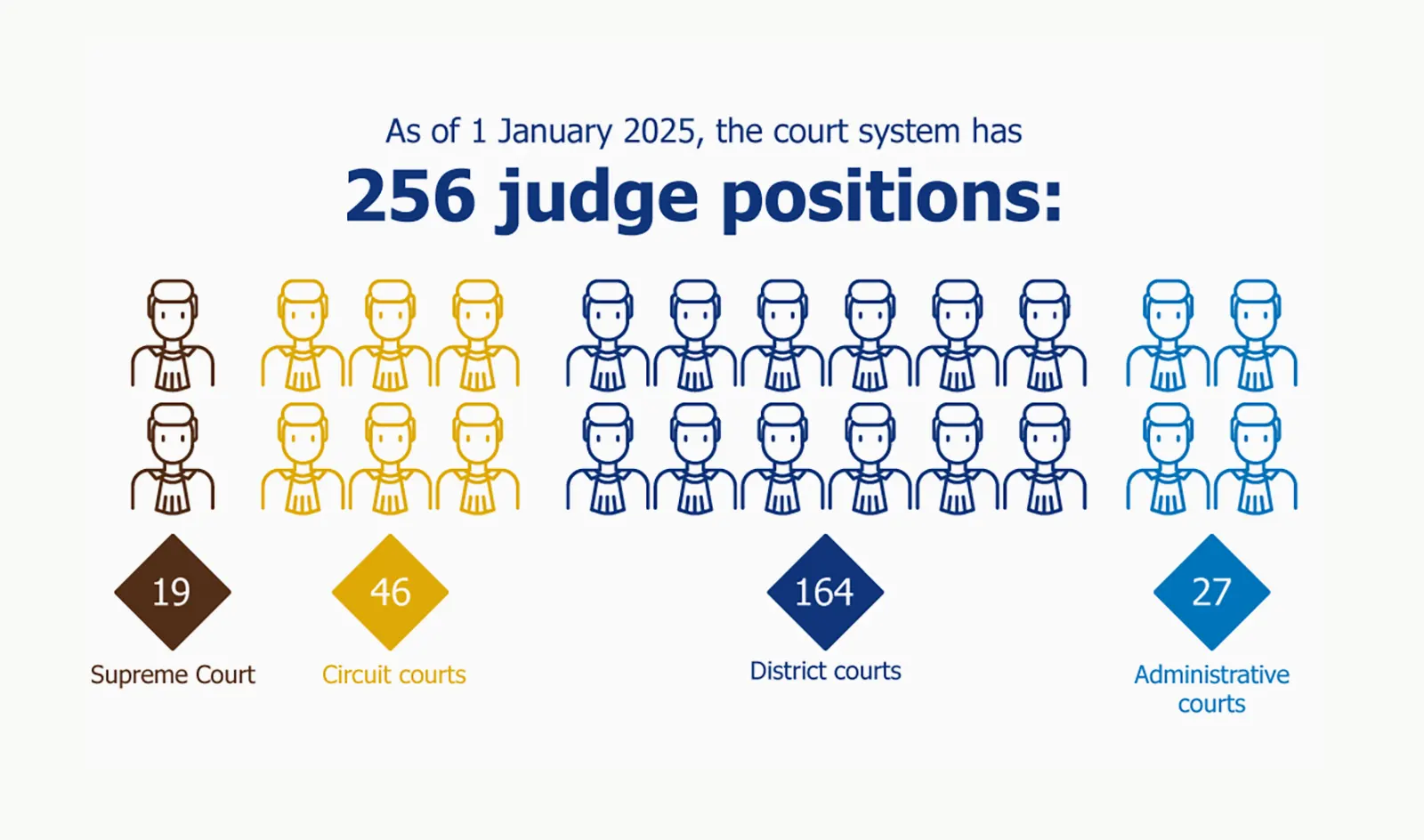
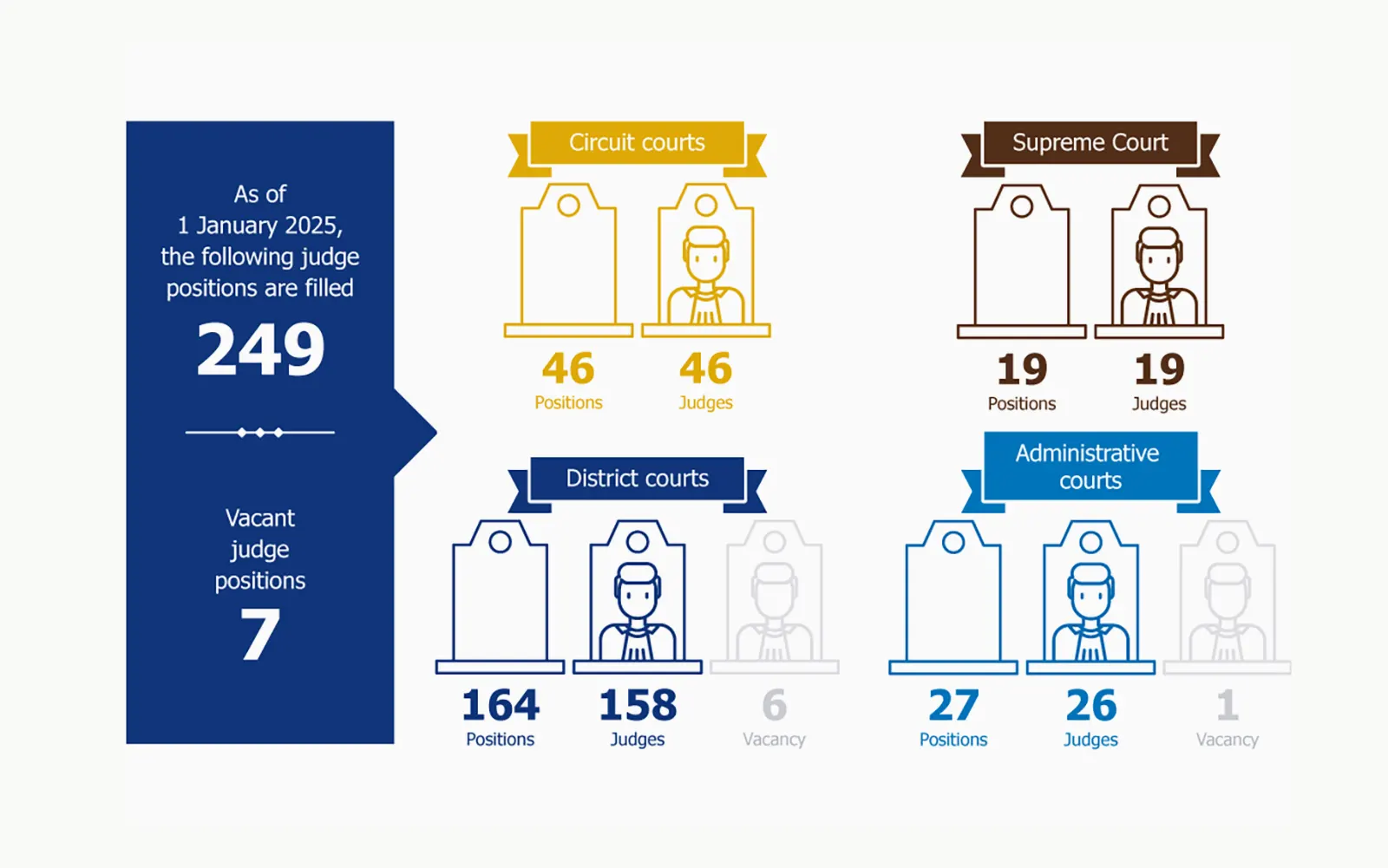

Gender structure of judges
There are 171 women and 78 men in office as of 1 January 2025.
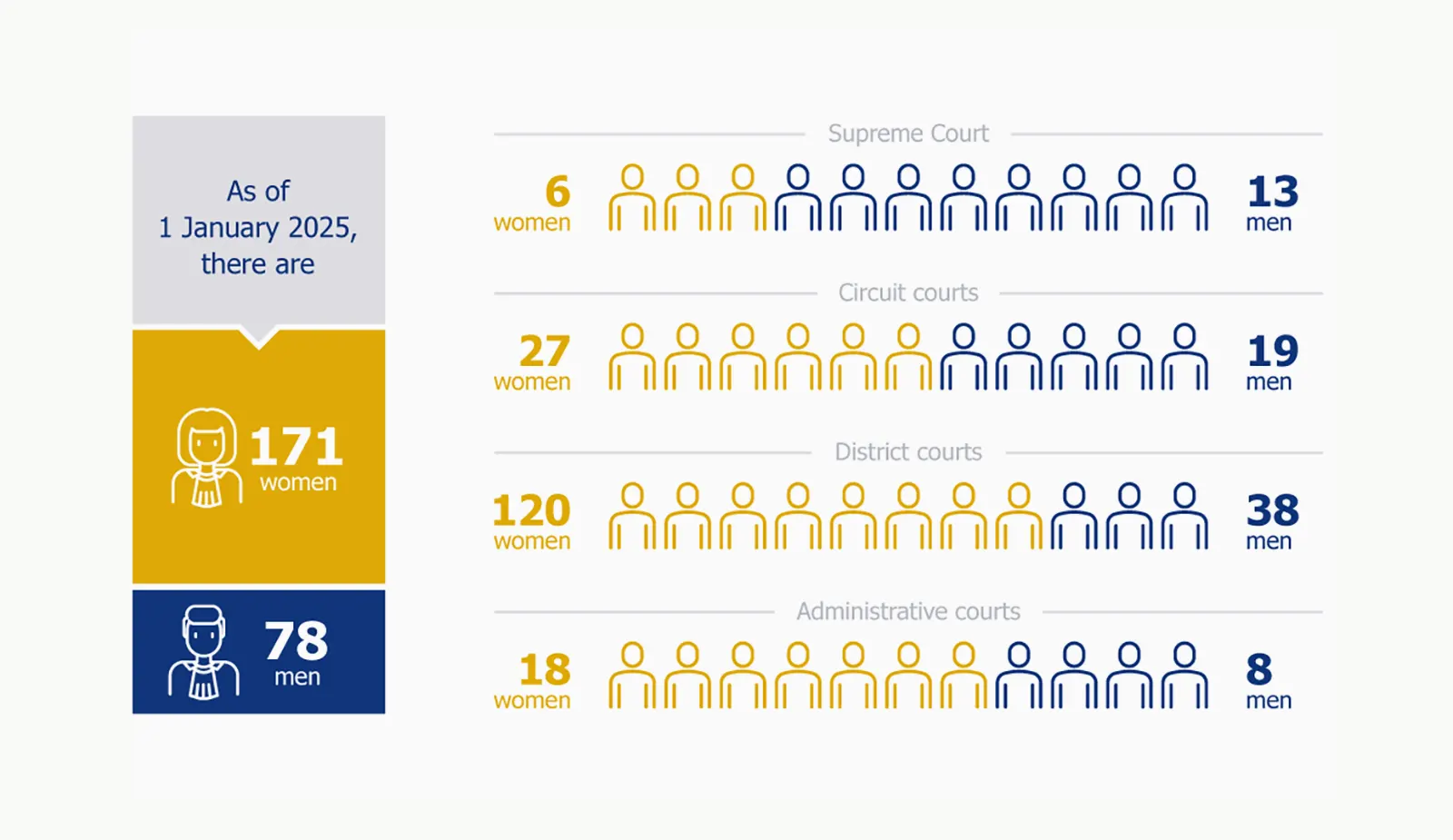
Age of judges
The average age of judges in office as of 1 January 2025 was 48.5 years.
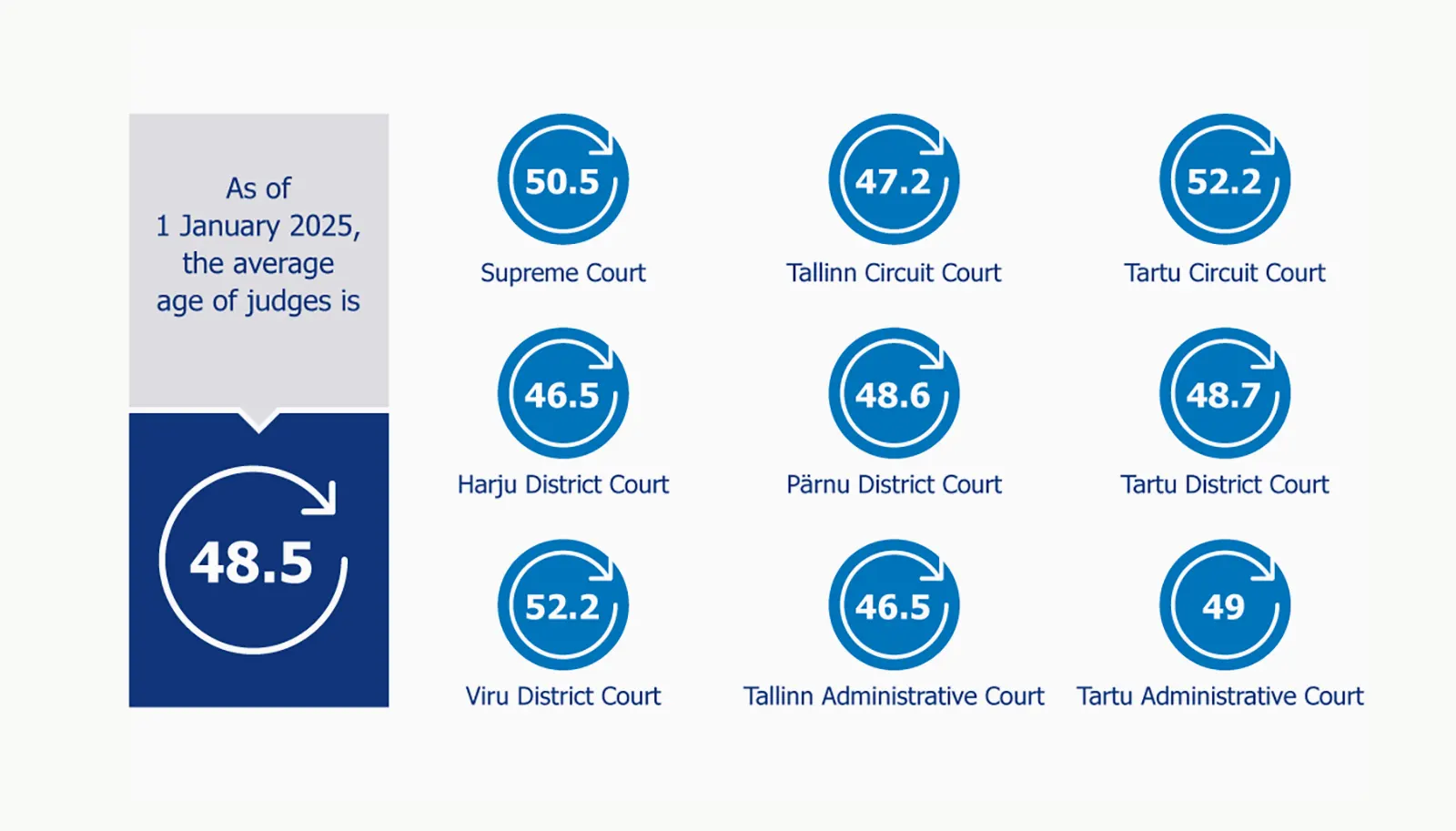
The largest number (96) of judges in office are aged 40–49. They are followed in number by those aged 50–59 (84) and those aged 30–39 (44). Those who have reached the age of 60 (25) are the fewest. There are no judges under 30 years of age.
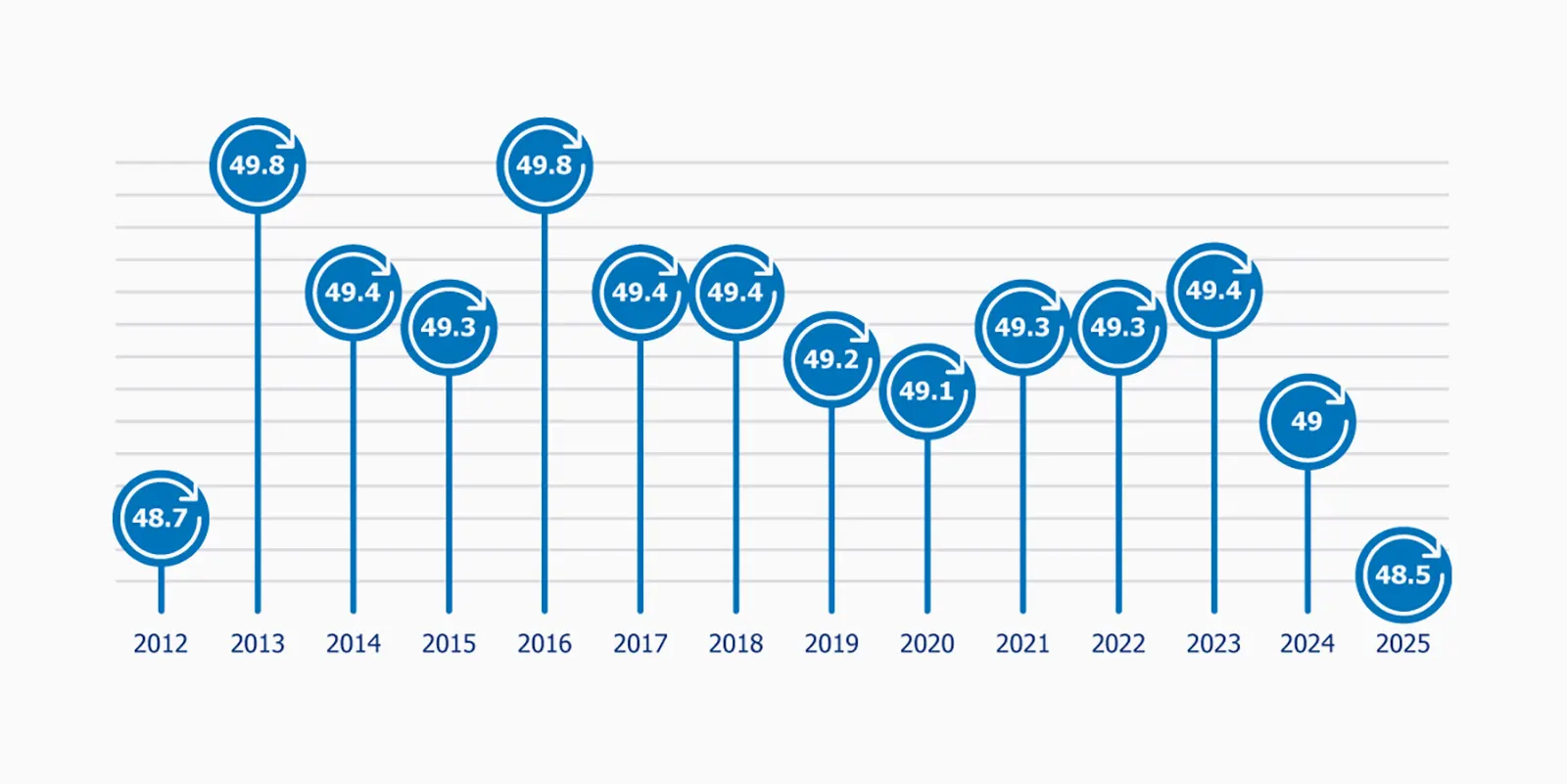
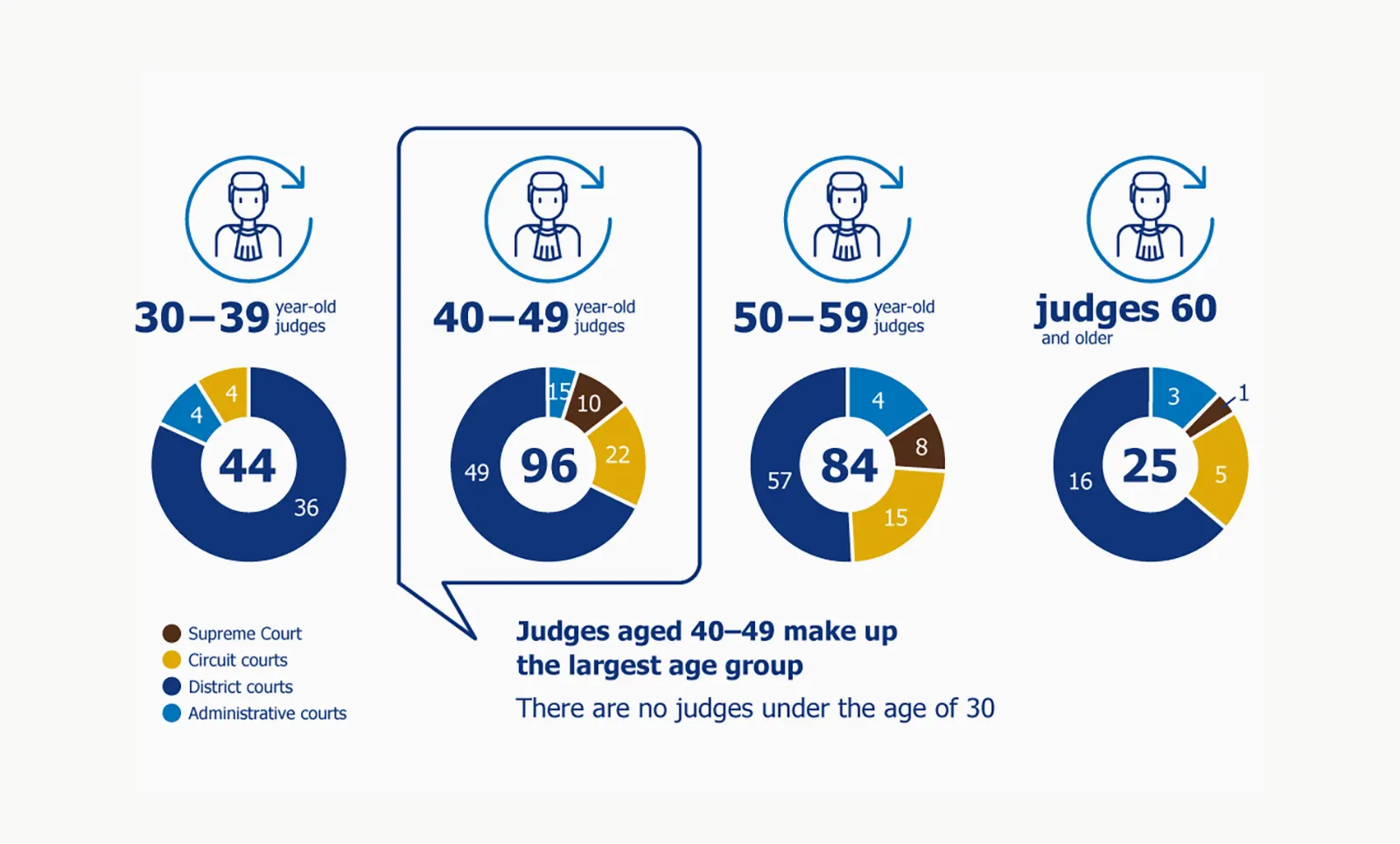
The renewal of the judiciary
At the turn of the year, there were 17 judges eligible for retirement, and six of them are known to be retiring in 2025. Another 32 judges will also become eligible to retire in the period of 2025–2030. Among them, eight judges will be able to retire in 2025, and five of them have expressed their wish to do so. Thus, according to current data, 11 judges will retire in 2025.
Speaking of pensions, it is worth noting that as of the beginning of 2025, more than half of the judges in office (133 judges or 53%) will not have a right to receive a judge’s pension.[4]
In 2020–2024, 55 judges left and 73 took up their positions. Thus, more than a quarter of the judges in office at the beginning of 2025 have started in the last five years.
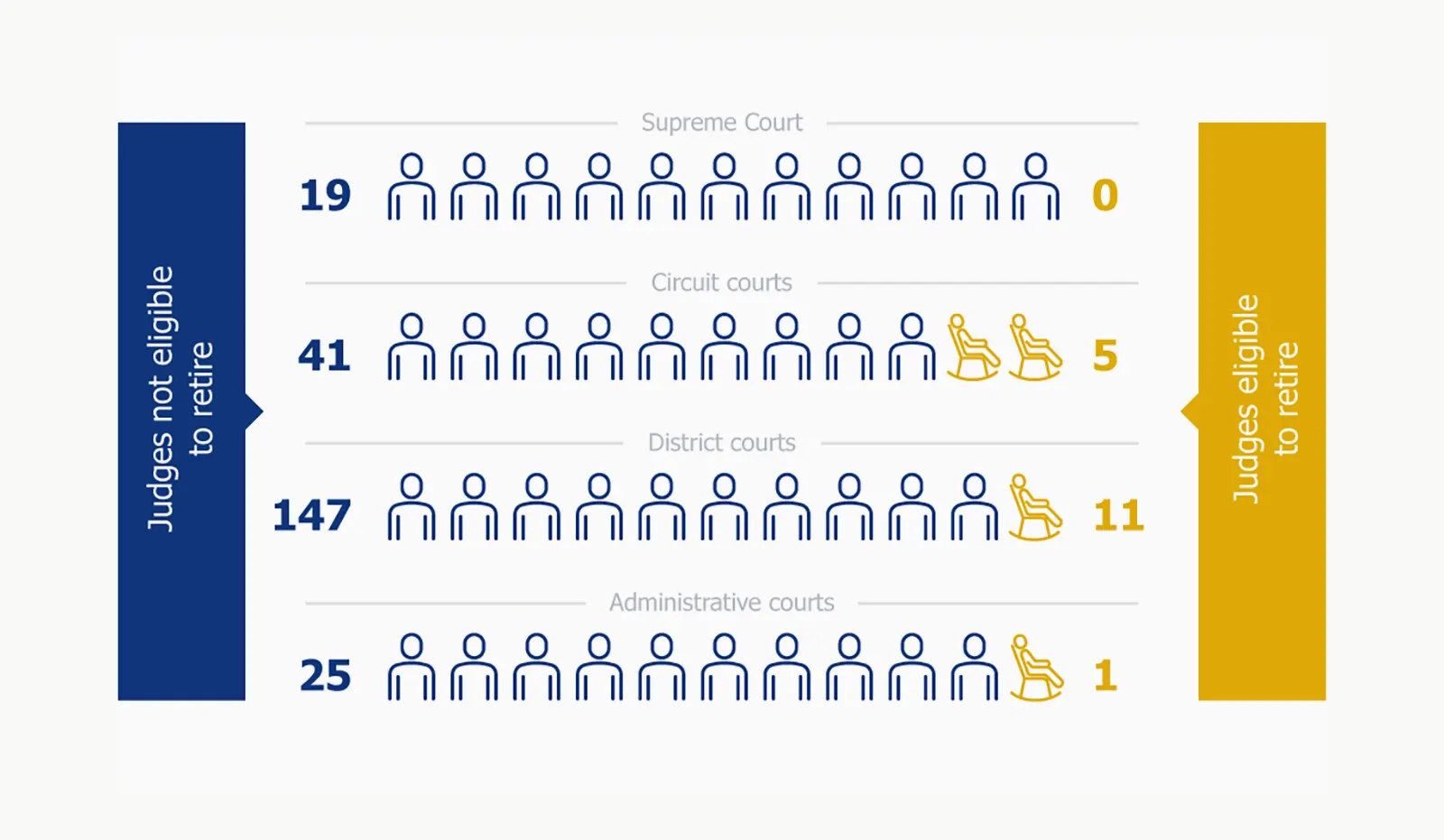
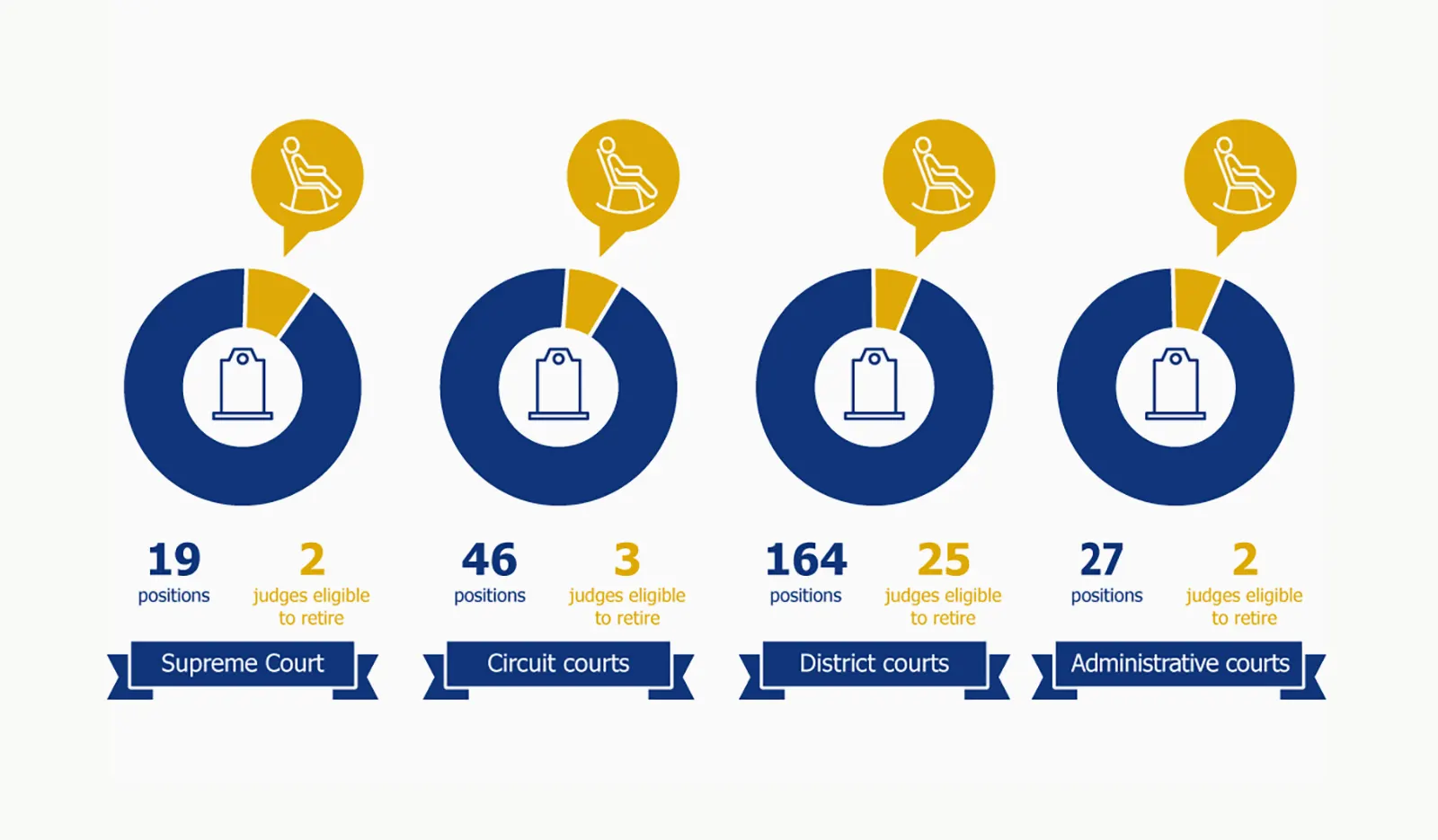
New judges and transfers
In 2024, 19 new judges joined the court system: three in Tallinn Circuit Court, one in Tartu Circuit Court, three in Tallinn Administrative Court, five in Harju District Court, five in Tartu District Court and two in Viru District Court. At the same time, six judges were transferred within the court system: Kristjan Siigur, who had worked at Tallinn Administrative Court, took a position as a judge at Tallinn Circuit Court (also as a chair of the same court), and Kairi Piirisild, who had worked at Harju District Court, also took a position at Tallinn Circuit Court; Ingrid Kullerkann and Margit Jäätma, who had worked at Tartu District Court, and Anneli Alekand, who had worked at Viru District Court, began work at the Tartu Circuit Court; Oliver Kask, who had worked at the Tallinn Circuit Court, started working as a Supreme Court justice.
Markus Kärner, Siret Siilbek and Veiko Vaske began serving at Tallinn Circuit Court; Mario Truu at Tartu Circuit Court; Maarja Oras, Karolin Soo and Mait Laaring at Tallinn Administrative Court; Priit Lember, Kaisa Margus, Helvia Räägel, Kaija Koik and Siim Mõistlik at Harju District Court; Merili Ratasepp, Anastassia Stalmeister, Kristiina Laas, Sandra Kallas and Susann Liin at Tartu District Court; and Nele Teelahk and Kadri Väling at Viru District Court. Before being appointed as judges, four of them worked as judicial clerks, seven as sworn advocates, one as a public prosecutor, one as a senior prosecutor, one as the Deputy Secretary General in Criminal Policy at the Ministry of Justice, one as an advisor to the Office of the Chancellor of Justice, and four as advisors to the Supreme Court.
Judges who left their positions
Last year, 12 judges left office: one from the Supreme Court, three from Tallinn Circuit Court, two from Tartu Circuit Court, four from Harju District Court, one from Tartu District Court, and one from Viru District Court.
Due to retirement, Supreme Court Justice Viive Ligi, Tallinn Circuit Court judges Ulvi Loonurm, Imbi Sidok-Toomsalu and Margó Klaar, Tartu Circuit Court judges Aarne Sarjas and Maarika Kuusk, Harju District Court judges Aime Ivanson, Liili Lauri, Geete Lahi and Märt Toming, Tartu District Court judge Liivi Loide and Viru District Court judge Heli Väinaste were granted discharges.
Judge hiring rounds
The Minister of Justice (with the title Minister of Justice and Digital Affairs since 23 July 2024) announced four hiring rounds in 2024, but later cancelled one of them[5]. A total of 10 judge positions were sought to be filled in district, administrative and circuit courts (this number was 23 in 2023 and 24 in 2022).
On 25 March 2024, the hiring round for one judge position at the Tallinn Administrative Court began. Judge Karolin Soo, elected in the framework of this hiring round, was appointed to office by the President of the Republic on 2 July.
On 31 May 2024, the Minister of Justice announced a hiring round for two judges of the civil department of Viru District Court – one at Narva Courthouse and one at Rakvere Courthouse – and two judges of the civil department of Harju District Court. However, the directive that was the basis for this announcement was revoked on 27 August 2024 by the Minister of Justice and Digital Affairs, who took office on 23 July 2024. The reason was the goal of the Government of the Republic to cut labour and management costs in the administrative field, as well as operating and targeted support by 10% over three years: 5% in 2025, 3% in 2026 and 2% in 2027.
On 10 December 2024, the hiring round began for the positions of one judge of the Civil Chamber of Tallinn Circuit Court, one judge of the Civil Chamber of Tartu Circuit Court, and one judge of the Criminal Chamber of Tartu Circuit Court. A day later, a hiring round was announced for the positions of two judges of the civil department of Viru District Court in the Narva Courthouse, one judge of the civil department of Viru District Court in the Rakvere Courthouse, and three judges of the civil department of Harju District Court. These hiring rounds are expected to be completed in the first half of 2025.
____________________________
[1] Starting from 2023, data are submitted as of the turn of the year.
[2] In 2021, Regulation No. 47 of the Minister of Justice of 27 October 2005 ‘Number of judges and assistant judges at district, administrative and circuit courts and their division among courthouses’ was amended so that if a judge is away from their duties for a longer period, an additional judge can be appointed. The number of judges can be temporarily increased by as many as five judges in Harju District Court and by one in Tartu District Court.
[3] In 2024, an additional judge could be appointed at Tallinn Administrative Court, considering that until 31 May 2025, Pärnu Courthouse may have 2 judges and the administrative court may have a total of 19 judges.
[4] According to § 1322 of the Courts Act, judges who have taken office after 1 July 2013 will not have a right to receive a judge’s pension.
[5] One of the participants in the hiring round challenged the cancellation of the judge hiring round in the administrative court. At the time of writing, no final decision has yet been made in this case.



